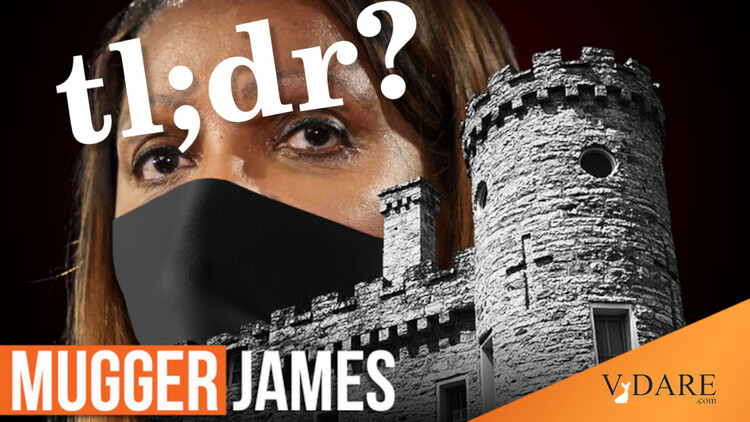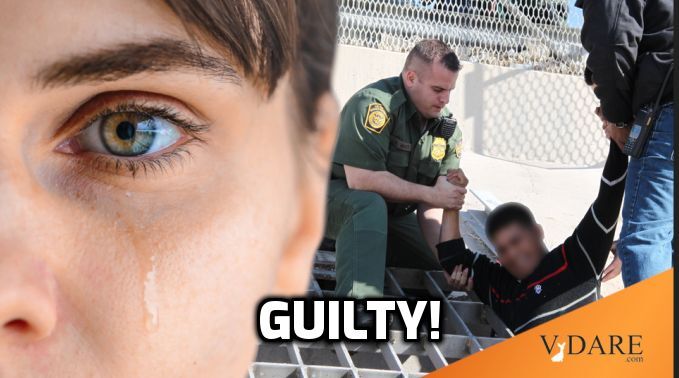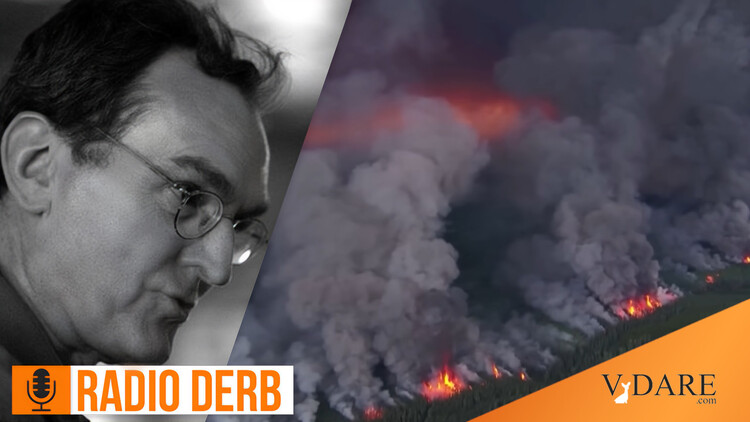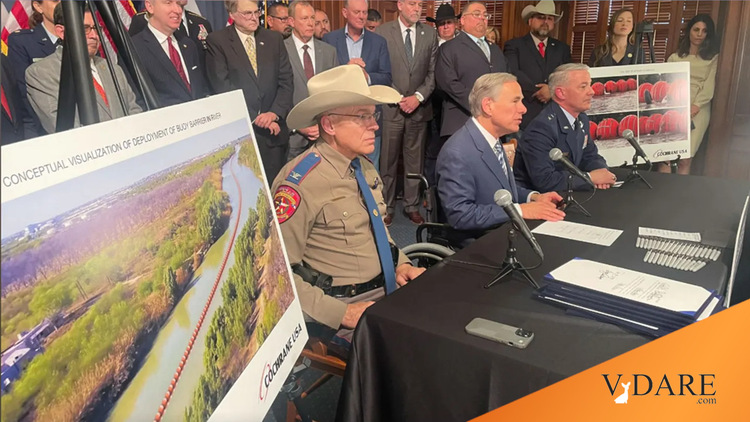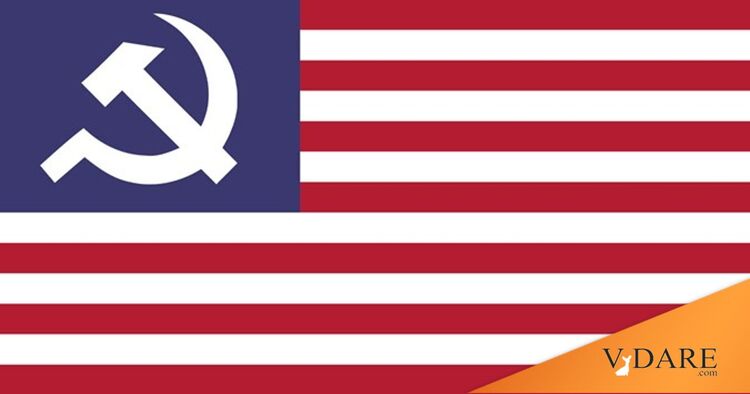From the Los Angeles Times below is an article that makes evident how the violence against the Trump rally in Chicago was part of the ongoing Safe Spaces campus movement, such as the Yale freakout over Halloween costumes.
Of course, Safe Spaces has nothing to do with safety and everything to do with the territorial imperative. Young people naturally feel the urge to fight turf wars, to stake out territory and drive out enemies. Normally in America we have laws to regulate the competition for property so territorial urges don’t turn into mob rule. But over the last year minority college students have increasingly asserted that they must be above the law because racism. It’s the only way they can be safe.
What we’re seeing at UIC is the balkanized future of America in which The Diverse can only come together over fear and loathing of whites. Hating whites is the KKKrazy Glue of the coalition of the fringes.
How black, Latino and Muslim college students organized to stop Trump’s rally in ChicagoKate Linthicum and Kurtis Lee
When black, Muslim and Latino student activists at the University of Illinois at Chicago heard last week that Donald Trump was planning a rally on campus, they did what any good organizers do in 2016: They went online.
Within days, thousands of people had liked a Facebook page called “Stop Trump – Chicago.” Tens of thousands added their names to a MoveOn.org petition calling on the school to cancel the rally.
They all had one thing in common, said Casandra Robledo, a second-year student who helped organize the protest: “We felt so strongly that Donald Trump and his bigotry and racism wasn’t welcome here.”
 Let me briefly point out that the UIC Pavilion is not a secluded hideaway, but a major, freeway-close public venue on Eisenhower Expressway just east of the Kennedy Expressway and the Loop. For example, I saw Prince there in 1983 with a mostly black crowd and the Pretenders and Iggy Pop there in 1986 with an all white crowd.
Let me briefly point out that the UIC Pavilion is not a secluded hideaway, but a major, freeway-close public venue on Eisenhower Expressway just east of the Kennedy Expressway and the Loop. For example, I saw Prince there in 1983 with a mostly black crowd and the Pretenders and Iggy Pop there in 1986 with an all white crowd.
… Ahead of the Chicago rally, the students cited safety concerns in letters to campus officials that urged them to cancel the event.“As an undocumented UIC graduate student, I feel unsafe knowing that Trump along with his followers will be at my university,” organizer Jorge Mena wrote in an open letter to the school’s administration. “We already face systemic violence but we’re increasingly becoming targets of attack by his followers on and off Trump’s campaign trail.”
Some campus faculty joined in, penning a separate letter to school officials.So the violent protesters shutting down a public political gathering were engaging in self-defense, since everybody knows from watching TV that Trump supporters are Ku Klux Klanners and Nazis, so violence is okay. It’s self defense of Safe Spaces.Amalia Pallares, a political science professor involved in the effort, said she believes Trump’s divisive rhetoric is inconsistent with the university’s values of inclusion. “We didn’t feel this was the right venue for this kind of event,” she said in an interview.
“We were not opposed to free speech,” she continued. “It was a security issue. We felt that it would be a big challenge for the university to protect the students.”
Planning for the event started Monday night, when leaders from a range of groups gathered in a campus lecture hall. They included the Black Student Union, the Muslim Student Assn. and the Fearless Undocumented Association, which advocates for immigrants in the country illegally.Bernie, in exactly what sense are you using the word “appreciate?”Other local and national activism groups also got involved, including some local labor organizations, Black Lives Matter and MoveOn.Org, which has endorsed Democratic candidate Bernie Sanders.
Nick Berning, communications director at MoveOn.Org, said his organization printed signs for the protesters and sent out an email blast to its members in the Chicago area inviting them to join.
Tess Raser, an organizer with Assata’s Daughters, a group of black women that has protested police violence, said her organization saw the protest as an opportunity to connect Trump’s racist rhetoric with institutional racism in Chicago.
The demonstration kicked off Friday afternoon, with a rally on campus where Muslim and Latino immigrant students spoke. Protesters then marched to the rally site carrying a banner that read: “Trump makes America hate. Our students make America great.”
While some protesters stayed outside, others went into the event, many of them concealing anti-Trump posters under their clothes.
When Trump officials announced that the candidate wouldn’t be appearing because of security concerns, the crowd erupted, said B. Loewe, an organizer with a Latino group called Mijente, who was present at the rally. Trump supporters were angry, he said, and protesters were celebrating.
Some protesters chanted, “We stopped Trump,” he said, while others sang the lyrics to a Kendrick Lamar song, “We Gon’ Be Alright,” that has become an anthem of the Black Lives Matter movement.
Others in the crowd yelled slogans in support of Democratic presidential candidate Bernie Sanders.
Organizers of the demonstration and Sanders said Saturday that the protest was not in any way officially affiliated with his campaign, despite claims from Trump on Twitter that it was “Clinton and Sanders people who disrupted my rally.”
“As is the case virtually every day, Donald Trump is showing the American people that he is a pathological liar,” Sanders said in a statement. “Obviously, while I appreciate that we had supporters at Trump’s rally in Chicago, our campaign did not organize the protests.”
On Saturday, as Trump held more rallies across the Midwest, activists in Chicago and around the country were talking about what comes next.Tia Oso, national coordinator for Black Alliance for Just Immigration, which works with Black Lives Matter activists, said protests of Trump rallies “will most certainly” continue in the months ahead.
“Without disruption there is no progress,” she said.In parts of the world where many UIC students come from, university campuses are traditionally Safe Spaces — i.e., lawless sanctuaries closed off to the police. For example, when Fidel Castro was a student activist at the U. of Havana, he would venture off campus to commit crimes and then roar back to the college, where the police weren’t allowed to follow him. This helped make life in Havana vibrant. This Latin American tradition hasn’t spread explicitly to the U.S. yet, but Safe Spaces is a harbinger of this.




